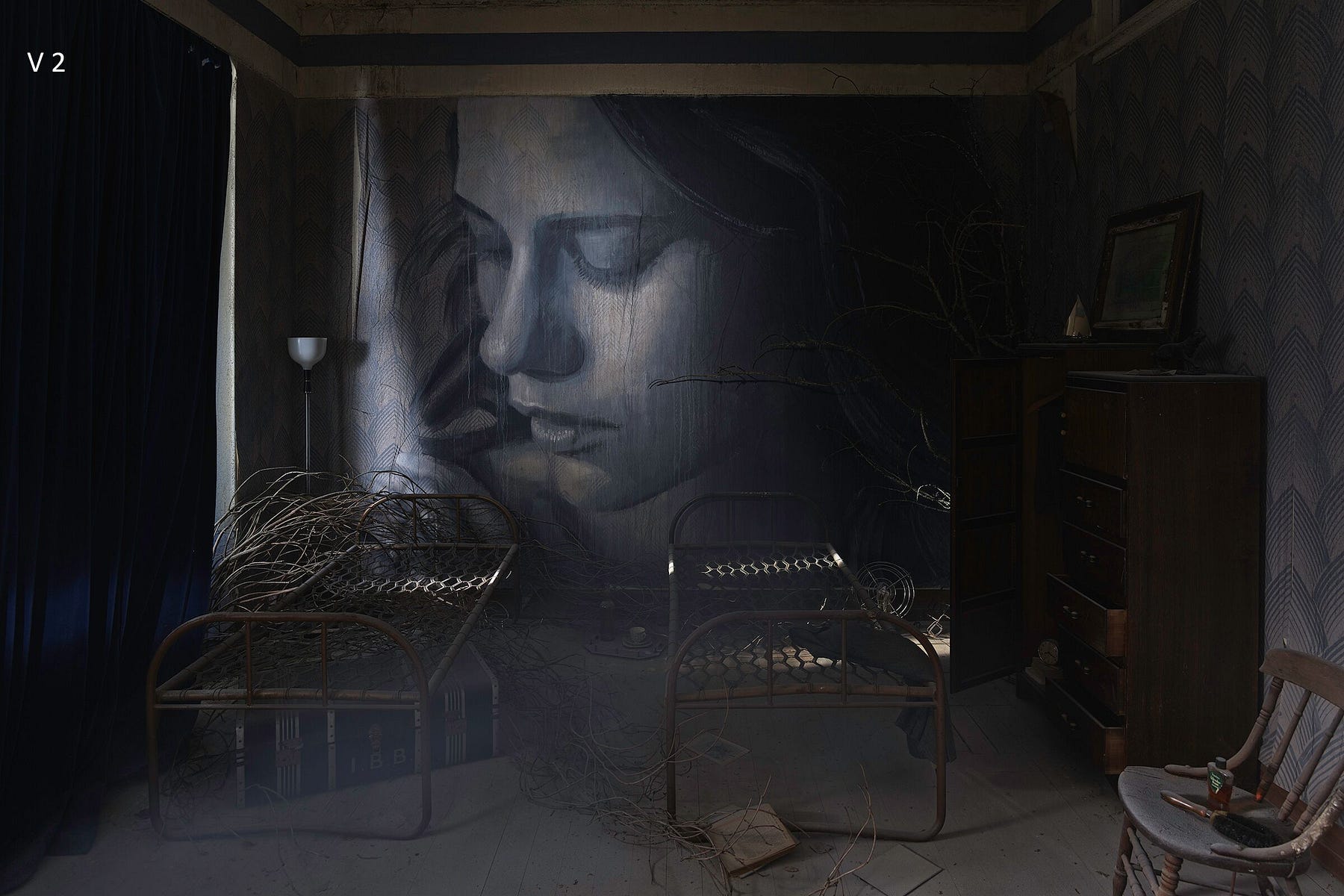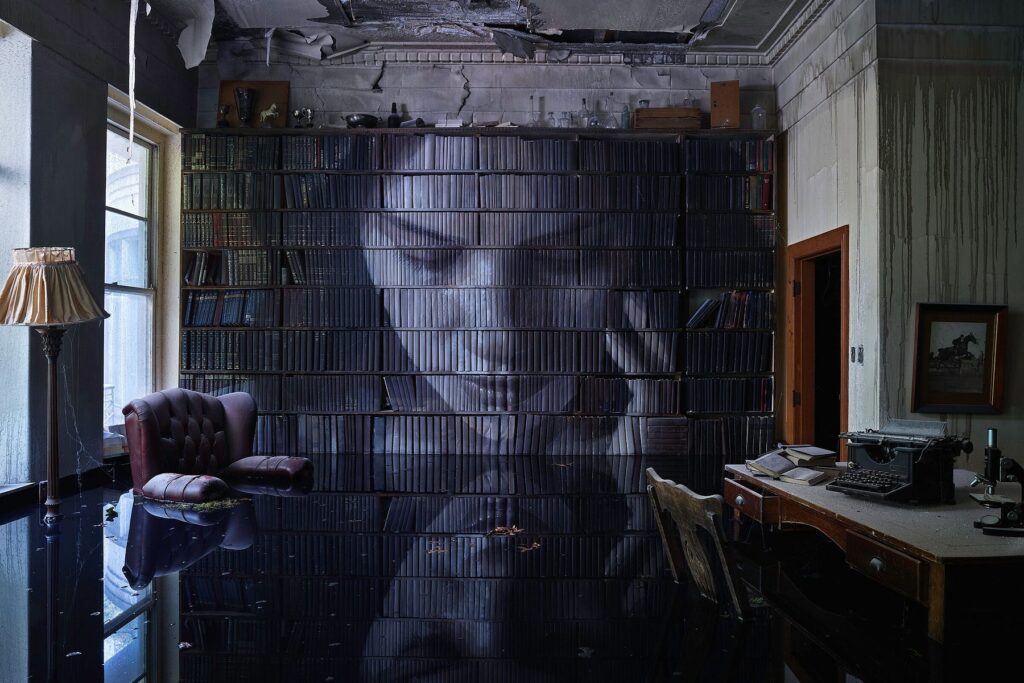By John Stapleton
The library at Burnham Beeches, a decaying mansion in the Dandenong Ranges east of Melbourne, looks nothing like it did in its hay day in the 1930s. Now it sits inside a glass case flooded with inky water.
Melbourne artist, known by the name of Rone, has transformed deserted Art Deco mansion Burnham Beeches in his most ambitious takeover yet.
Rone is the nom de plume for Tyrone Wright, who was born in the Victorian city of Geelong in 1980. In 2002 he began decorating skate boards and skate parks.
The following year he was caught by police holding an illegal exhibition in an abandoned building, but no charges were ever laid.
Fast forward from his early days as a street artist, today his distinctive images can be found in cities and towns from New York and Cuba to Taipei and outback Australia.
He has always been fascinated by the connections between new and old, beauty and ruin, youth and decay.
With beginnings in street art, stencil and screen printing, Rone was a seminal figure in the early Melbourne street art scene.
Recent installation work, Empty (2016) and The Omega Project (2017) continued Rone’s investigation into divergent themes of beauty and ruin, materiality and loss through the transformation of condemned, derelict or forgotten spaces; with each painstakingly produced artwork destroyed as the buildings are bulldozed to the ground.
From Vacant Space
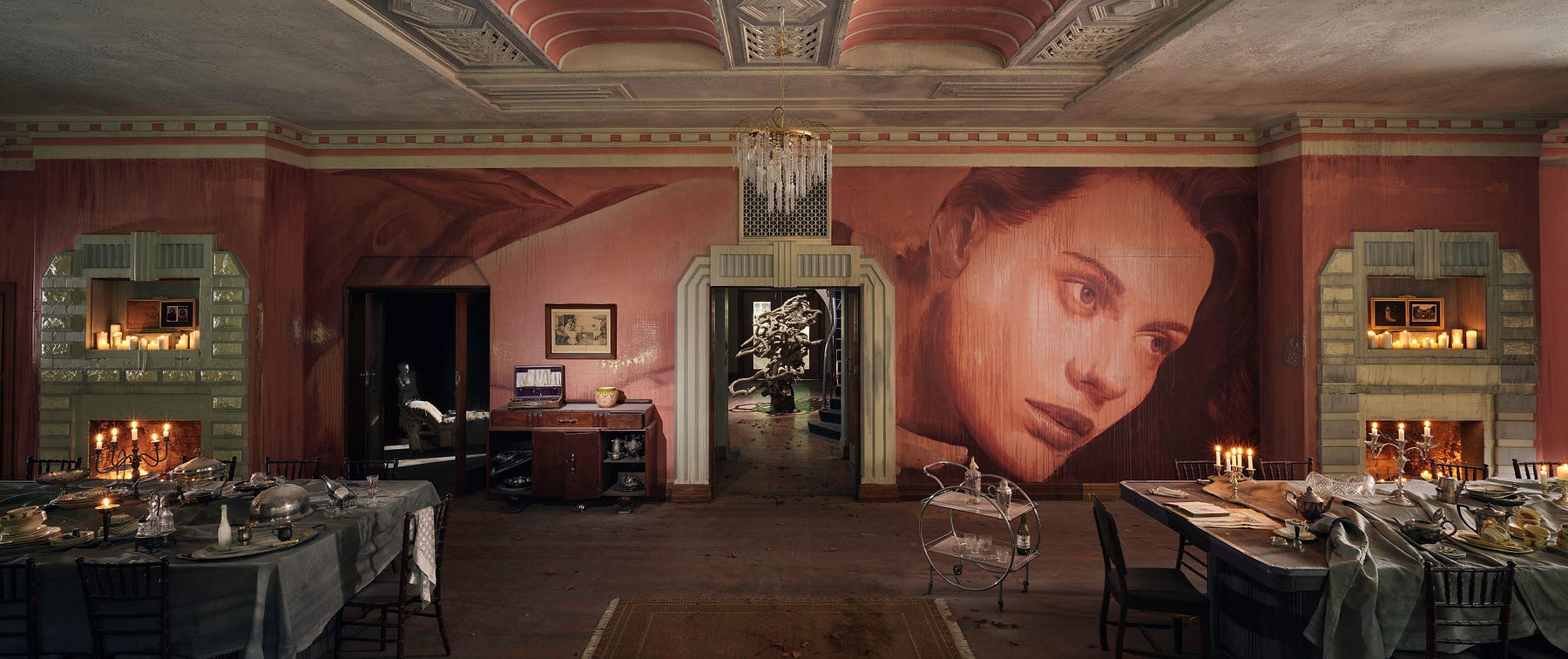
Left vacant for more than 20 years, the sprawling 1930s mansion sits neglected, in a state of ruin.
Questions hang heavy in its dense silence, each room strewn with the dusty remains of a collapsed empire and hints of romance past. Here, not much is certain but it’s clear that any signs of life have long since departed.
Ruins, as the artistic team involved knows full well, are far more evocative than modernity.
Following the success his 2017 outing, The Omega Project — which saw a condemned family home in suburban Alphington recast, fleetingly, as a gallery and installation piece before being demolished, Rone embarked on his largest and most ambitious project yet: Empire.
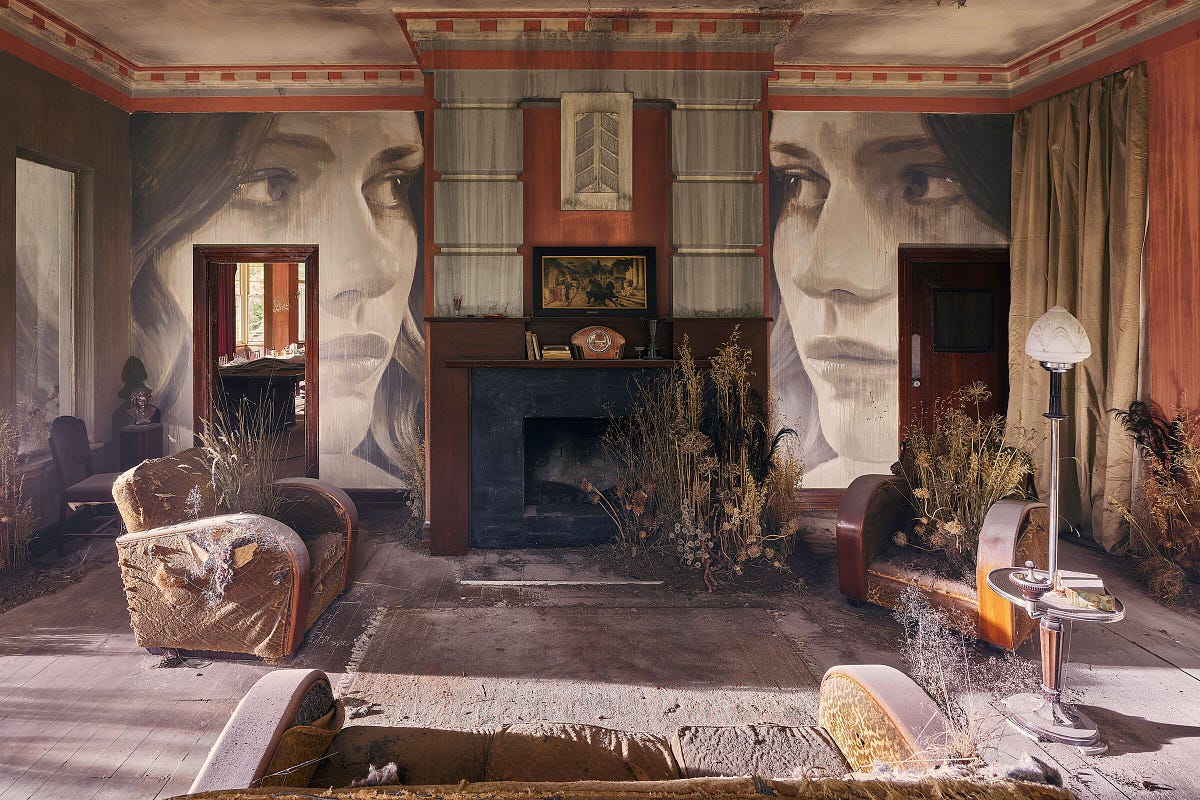
Part exhibition, part installation, part Virtual Reality and Augmented Reality experience, Empire combines art, vision, sound, light, botanical design and scent to take audiences on a hauntingly immersive multi-sensory journey into a re-imagined past of a faded icon.
Featuring extensive Deco-era styling from interior stylist Carly Spooner (The Establishment Studios, The Omega Project) across 12 of the estate’s otherwise empty spaces, the experience has been meticulously curated to evoke a distinct series of moods as audiences move from room to room.
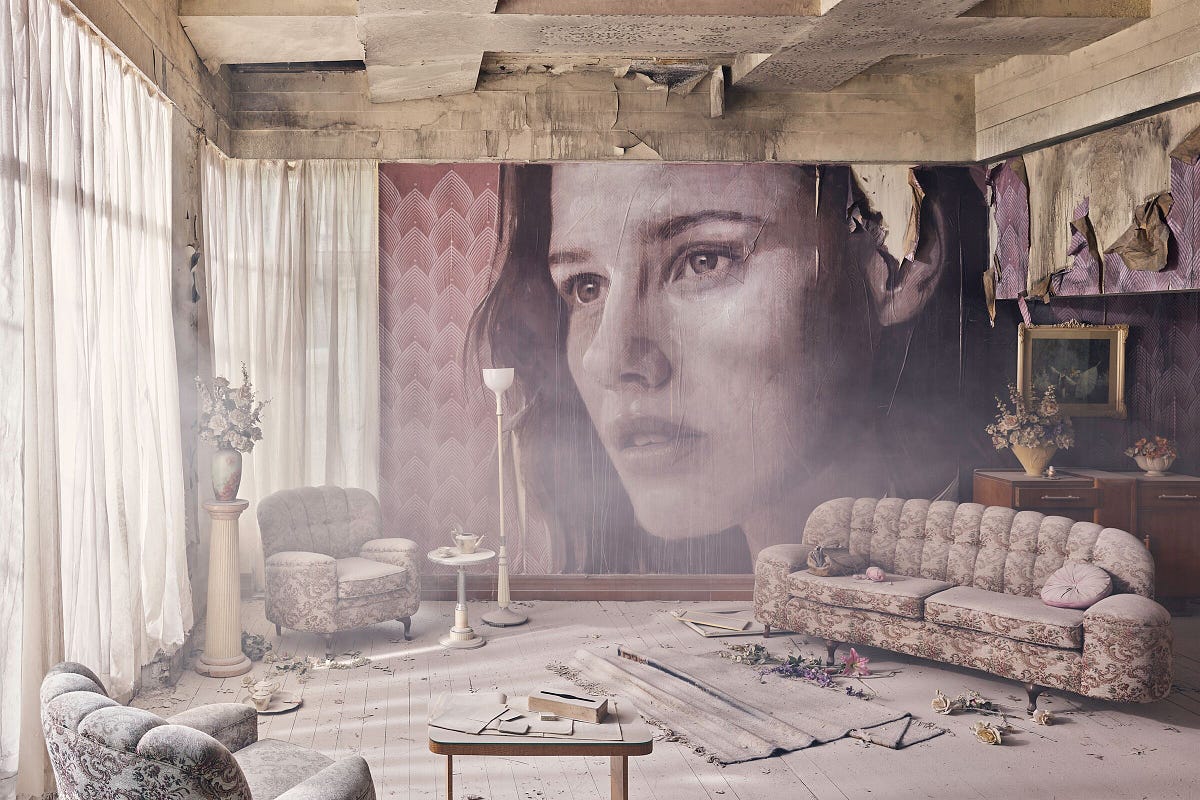
Thematically linked to the seasons, rooms have been furnished with over 500 individual antique pieces, which Spooner and Rone painstakingly sourced over a series of months.
Included is a grand piano that, for several weeks, was left to the elements in the mansion’s garden to achieve its aged patina before being transplanted back into the house — moss, leaves and all.
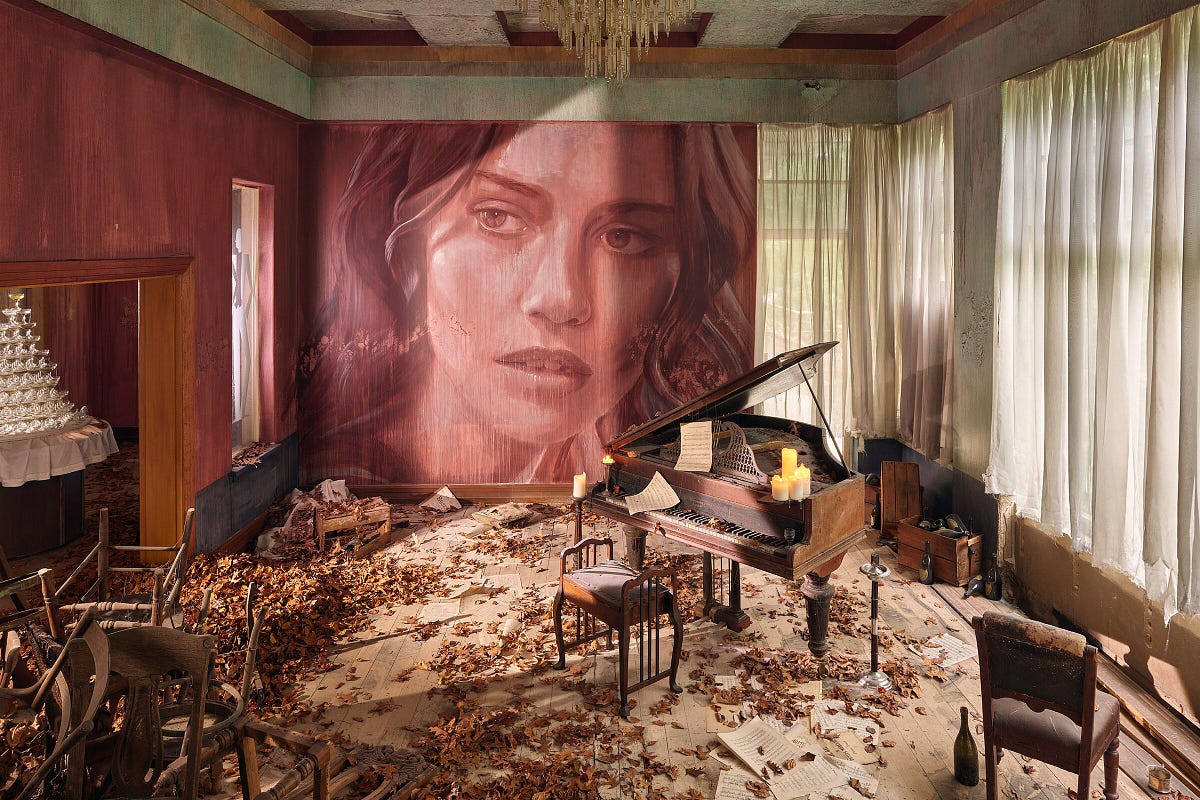
Complementing Spooner’s film set-like styling is a series of stunning botanical installations by design studio Loose Leaf that reference each season and reflect the perpetual life and death cycles of nature and the estate’s surrounding gardens.
Elsewhere, bespoke scent design by Kat Snowden, lighting design by John McKissock, and stirring multi-channel sound design from composer Nick Batterham (which drew on months’ worth of ambient audio recorded on site in the estate’s gardens, season by season) present sensory elements that draw audiences deeper into Rone’s veiled narrative.
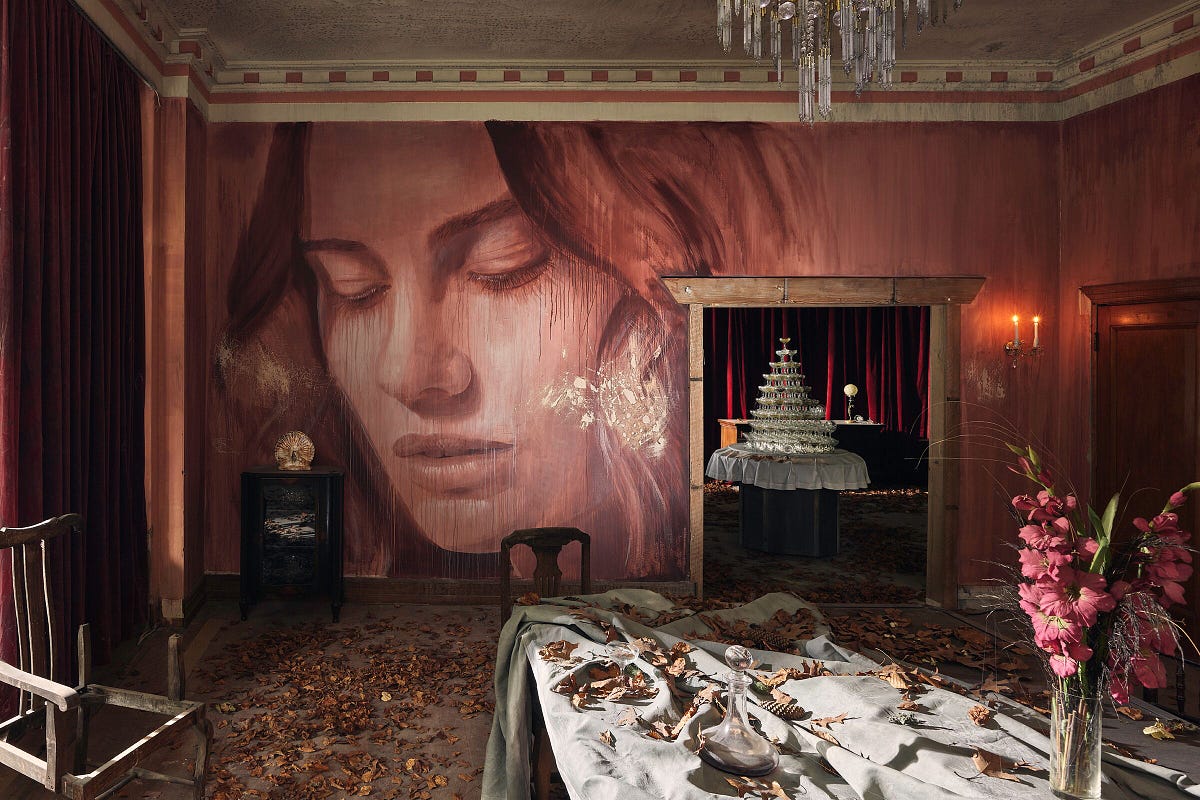
Appearing as ghosts or hazy recollections, a series of the artist’s evocative monochrome ‘Jane Doe’ portraits loom large on walls across the multi-storey mansion.
After an exhaustive search for a muse that could embody the mood and aesthetic that Rone envisioned for the project, he connected with screen actress Lily Sullivan (Picnic at Hanging Rock) — who, as it turned out, was already a fan after seeing The Omega Project in 2017.
Rone says that Sullivan’s understated and timeless “girl next door” beauty cast her as a perfect candidate to inhabit the role of muse for what he describes as his most expansive and time-consuming project to date.
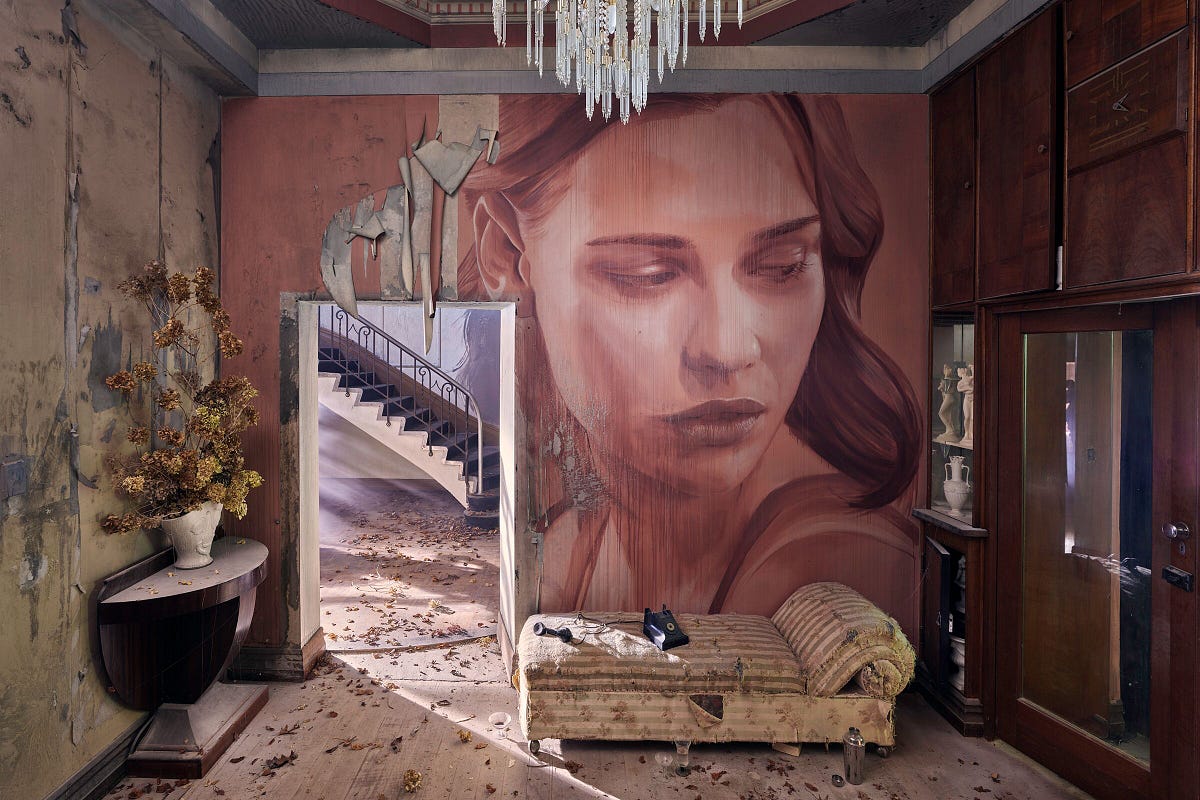
“When I first came up to check out the building I wasn’t sure what to expect,” says Rone of the Art Deco Streamline Moderne style property, which was built in 1933 as the family home of wealthy industrialist and founder of the Aspro brand, Alfred Nicholas.
“Once I got inside and realised that I had free rein on an entire mansion my mind was blown with ideas of what could be possible. It was quite overwhelming.”
After its glamorous heyday in the 1930s, Burnham Beeches later served as a research facility, children’s hospital and luxury hotel until being shuttered in the late 1990s and purchased by current owners, the Vue Group in 2010.
Its next incarnation will be as Australia’s first 6-star luxury retreat, planned to open in 2020.
Impermanence
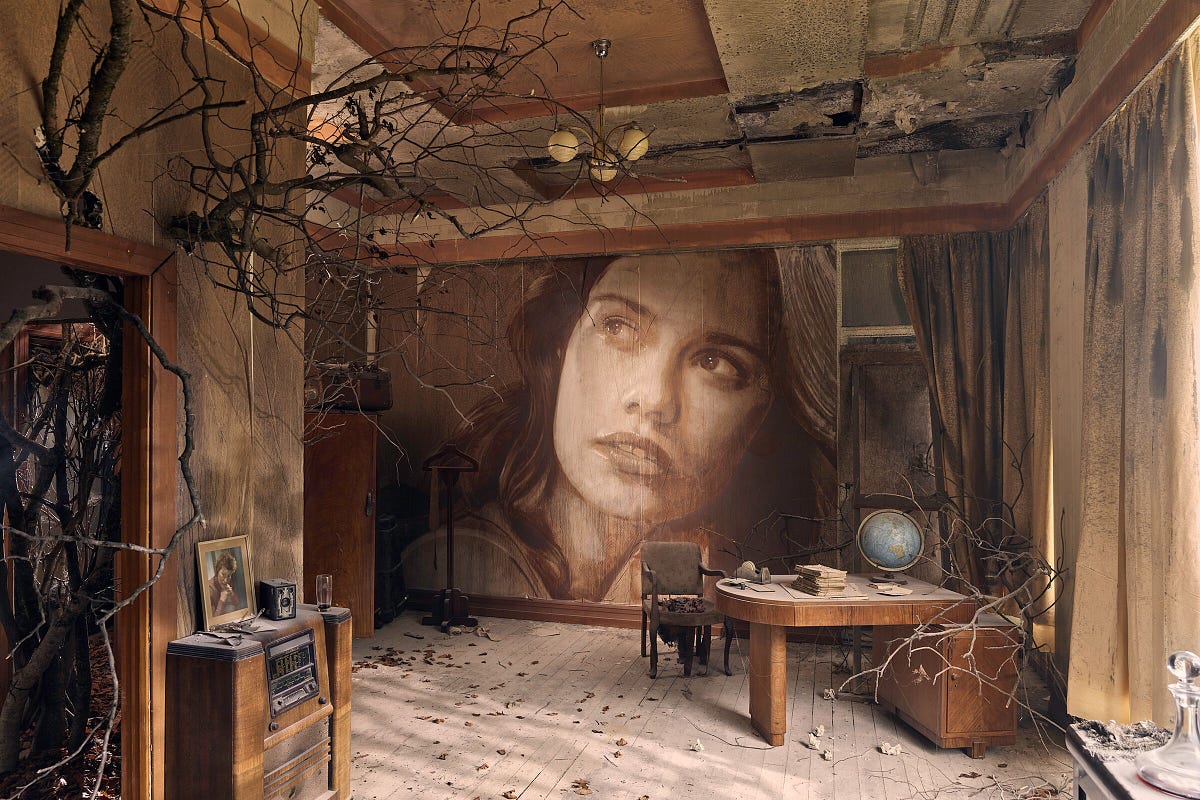
Unprecedented in scale and over 12 months in the making, the project has been a colossal undertaking for the Collingwood-based artist, who commenced work on the space in early 2018 — around the same time that he became a parent for the first time.
“From that perspective, the timing was quite intense but when an opportunity like this comes up there’s just no choice,” Rone explains. “I knew from the beginning that this was a once-in-a-lifetime chance to create something really incredible.”
Rone told the Australian Broadcasting Corporation Wright he hoped Empire’s impermanence would add to its appeal — much like street art.
I think that’s something with street art and graffiti … you have to go see it now while it lasts because it could be gone tomorrow — and that’s what makes it exciting.
I kinda hope this whole project has that same energy.
In the hallway, branches have been intertwined overhead to create a dark, atmospheric tunnel.
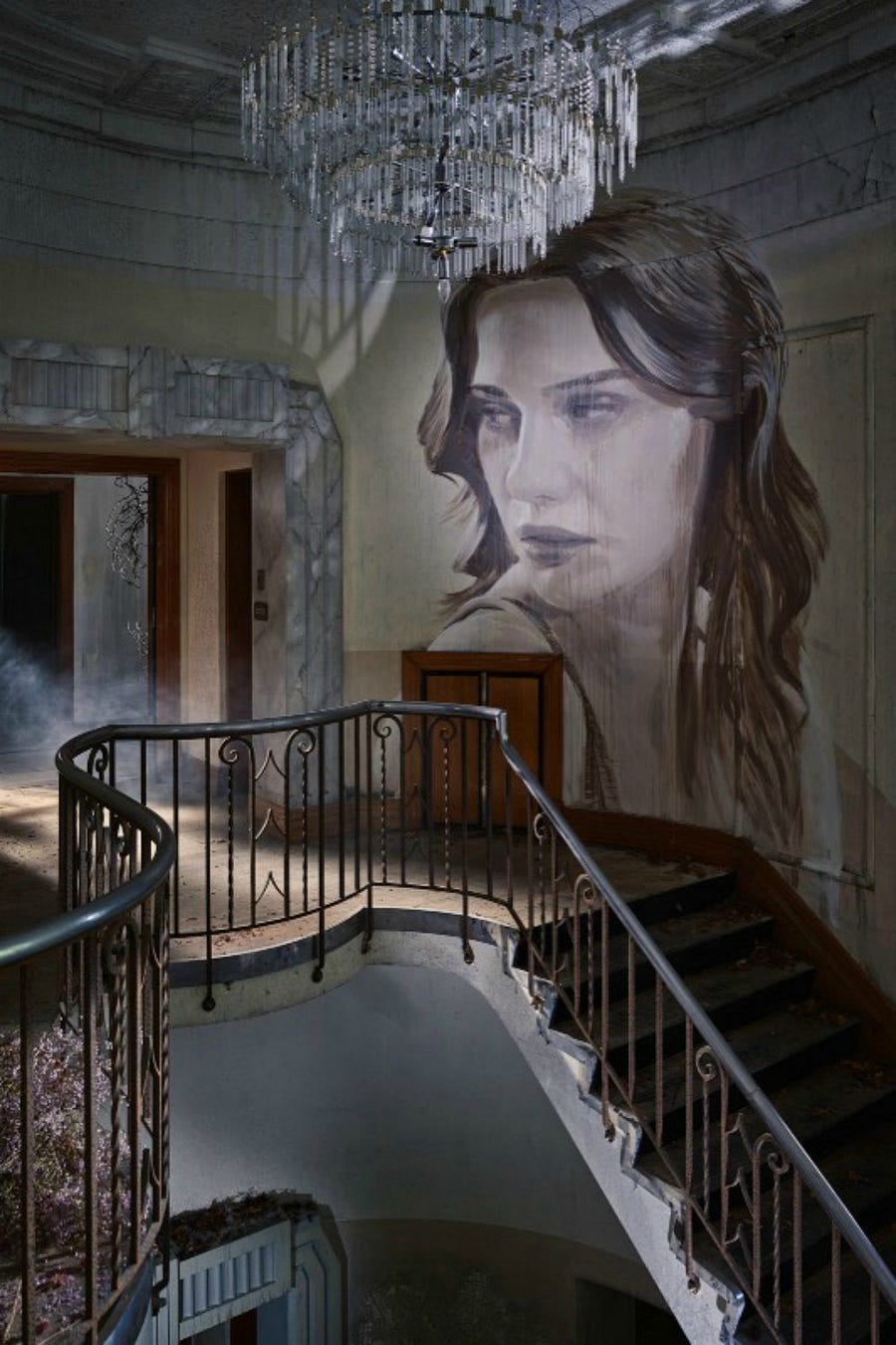
It looks like nature is starting to come back and take over the building once again.
Walking around this property and driving up here [you see] how important nature is to the area … you could see this place just being engulfed if it was left for another few decades.
While Rone says that fragments of inspiration for Empire came from the heart-wrenching melancholia of Johnny Cash’s acclaimed Mark Romanek-directed film clip Hurt, (where Cash covered Nine Inch Nails) he was careful not to dictate the narrative. Instead, he’s opted for unguided ambiguity, encouraging audiences to ask their own questions and create a storyline based on their own perception and experience.
“I want people to walk in and feel like they can explore the possibilities of what might or might not have happened here,” Rone explains. “I love exploring the concept of how — and why — something so magnificent can be left to decline into ruin.
Empire is about offering audiences the chance to create their own story; to temporarily transport their minds to another place, another time.”
It’s not often that you can be so fully immersed in another era like this. It’s almost like we’ve discovered a forgotten time capsule and cracked it open for the world to see.
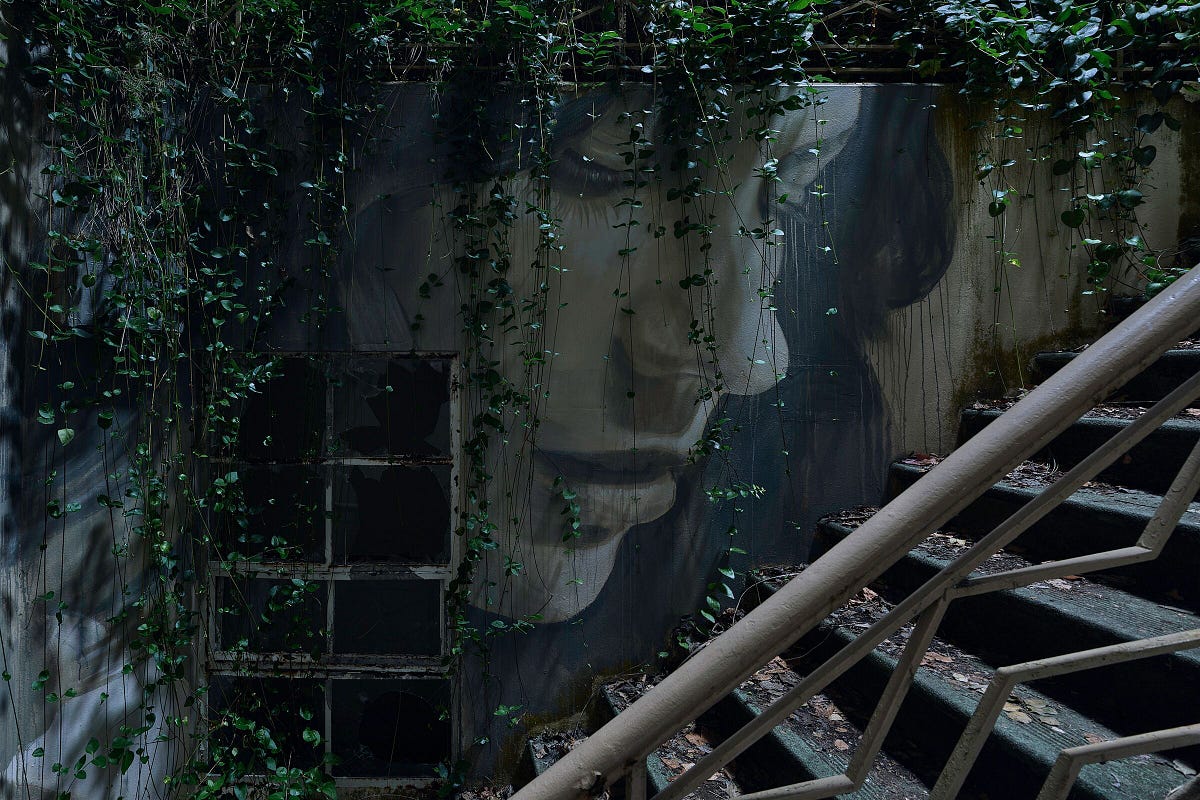
Rone exhibits internationally and his work is included in permanent collections at the National Gallery of Australia (NGA) and the National Gallery of Victoria (NGV). His public mural work can be seen on buildings in London, Paris, New York, San Francisco, Havana, Mexico City, Detroit, Hong Kong and elsewhere around the world.
Click here to go to his website.
